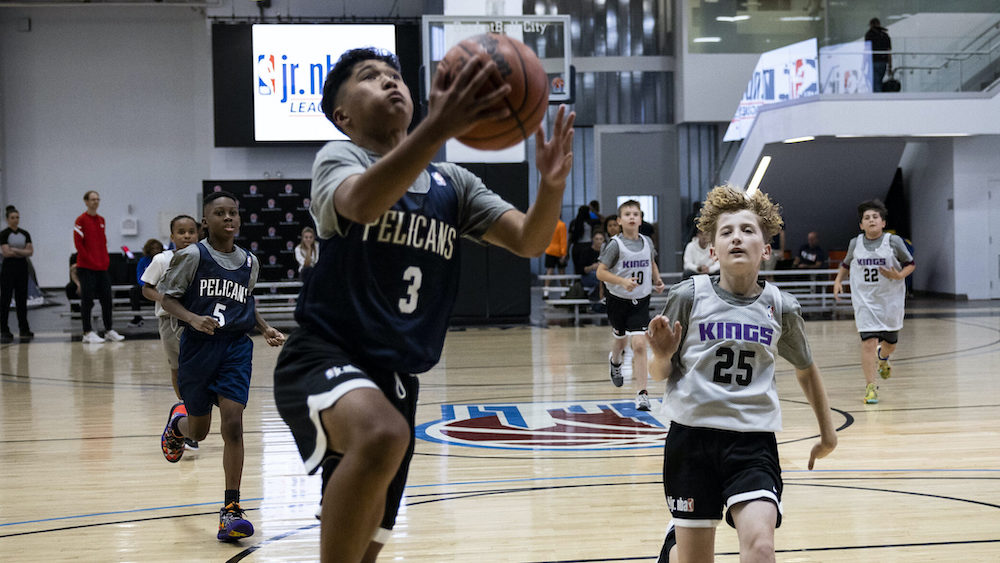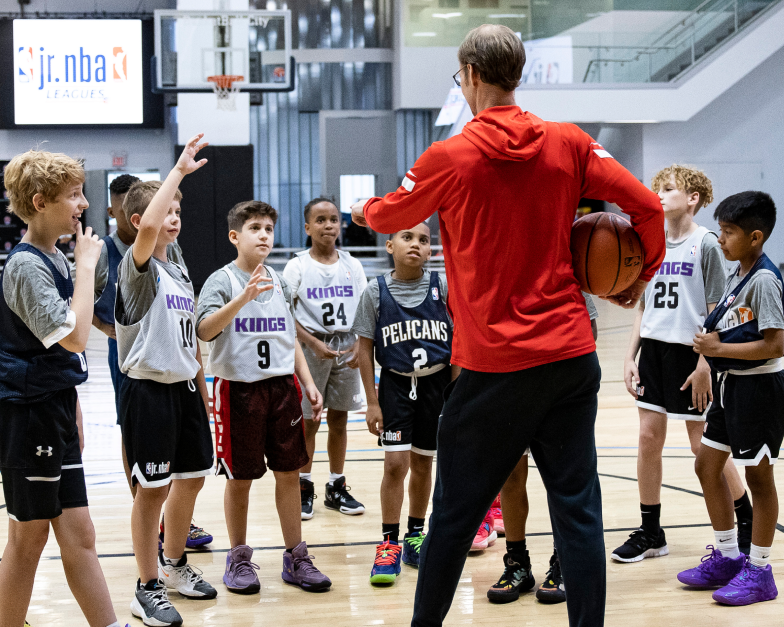
NBA & WNBA to Increase Youth Access to Basketball
July 22, 2022
The National Basketball Association (NBA) and Women’s National Basketball Association (WNBA) have launched their “most expansive grassroots basketball initiative ever in the United States.” The Jr. NBA Leagues, a national network of youth basketball leagues for boys and girls ages 6-14, specifically addressing access and equity issues that were exacerbated during the pandemic.
The initiative will focus “on providing youth across socioeconomic, racial and gender lines with access to best-in-class recreational basketball” in order to stabilize the disruption caused to community-based sports by the pandemic. According to research from The Aspen Institute's Project Play, free play, practices and competitions all significantly declined during 2020 and parents of youth ages 15-18 reported a 65% reduction in time spent on physical activity. Additionally, the pandemic expanded gaps with sports becoming less accessible to lower-income youth.
“Coming off the pandemic, we felt it was imperative that we did our part in order to help advance and elevate the rec youth basketball experience,” said David Krichavsky, NBA senior vice president and head of youth basketball development. “Community-based programs have struggled financially to get kids back to playing, and we know those impacts are not felt equally across socioeconomic lines, racial lines and gender lines. So, we felt we needed to do more.”
Jr. NBA Leagues participants will represent NBA and WNBA teams in their home markets and across the leagues by competing in official team-branded uniforms. RCX Sports, a Jr. NBA partner since 2018 and market leader in youth sports experiences, will serve as the program’s official operating partner. All Jr. NBA Leagues members – which will include a combination of community-based organizations, schools, and independent operators – will receive a robust suite of resources including training opportunities and basketball curricula designed to enhance league effectiveness, gameplay, and on-court and off-court player and coach development.

The program will tip off with leagues across 11 markets in the US in November 2022 including Sacramento, California; Washington, D.C.; Boise, Idaho; Louisville, Kentucky; New Orleans, Louisiana; Kansas City, Missouri; Omaha, Nebraska; Las Vegas, Nevada; Philadelphia, Pennsylvania; San Antonio, Texas; and Seattle, Washington. After this first stage, the program will expand nationwide with the goal of reaching nearly a half million participants in the first five years.
The initiative largely targets community-based organizations, non-profit organizations and independent operators, all of which can register online to join the Jr. NBA Leagues national network. The Jr. NBA is also partnering with SHAPE America (Society of Health and Physical Educators), which serves more than 200,000 health and physical education professionals across the country. Together they will assist 40 Title I schools - the nation’s oldest and largest federally funded program providing $7 billion to school systems - which receive financial assistance because of a high concentration of low-income students.
These schools will receive Jr. NBA programming, resources and basketball development curricula to host after-school Jr. NBA Leagues for free. Additionally, high school students will receive the opportunity to enroll in a Jr. NBA Referee Development Program to learn the necessary skills to become a referee and gain an understanding of the career opportunities in officiating.
“This is really about social impact and how do we ensure that kids, without regard to socioeconomic status, race or gender, have access to the sport and have a great experience when they play basketball,” said Krichavsky.
“The youth basketball ecosystem has experienced unique challenges over the past two-plus years, and we are committed to addressing those challenges with programs like Jr. NBA Leagues. We look forward to using the resources and expertise of the NBA, WNBA and our teams to support recreational and community-based youth basketball programs at a time when they need it most, while also enhancing the playing experience for hundreds of thousands of boys and girls.”